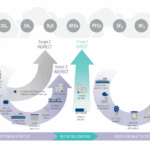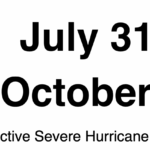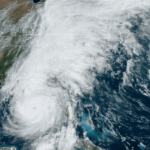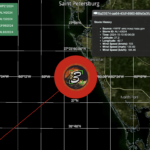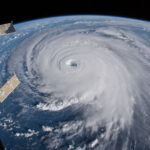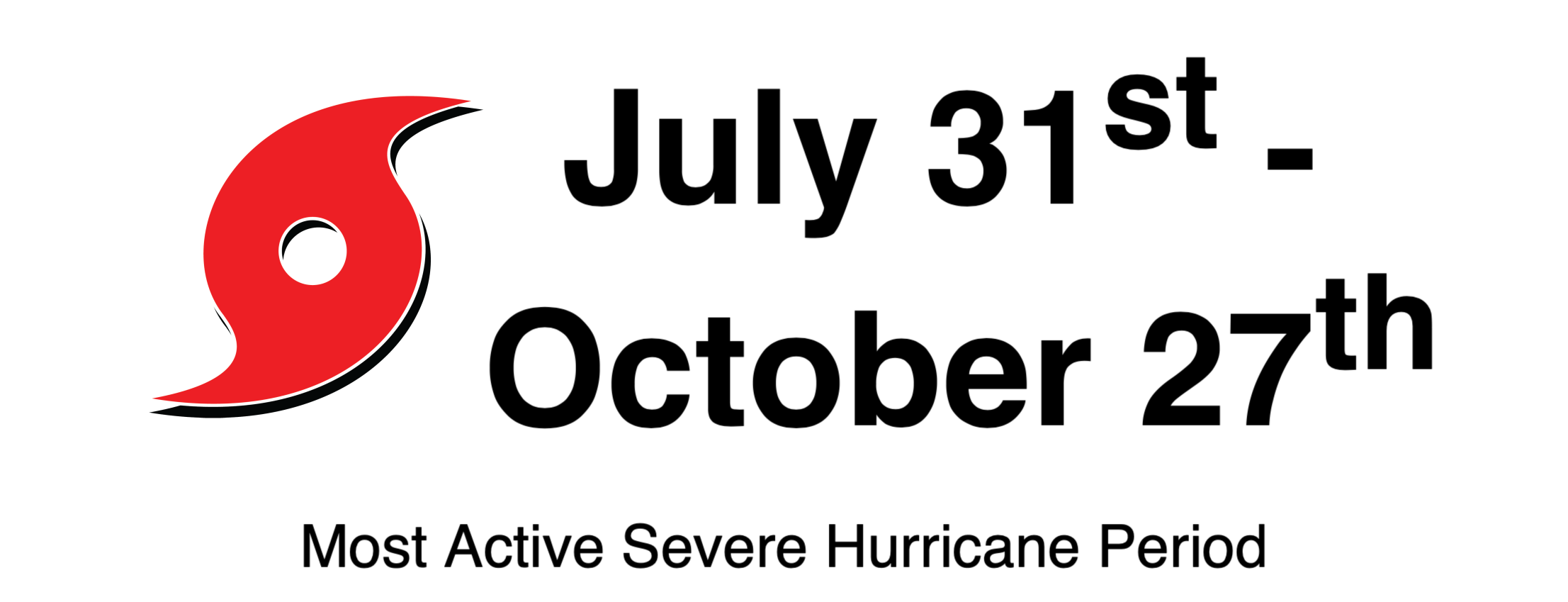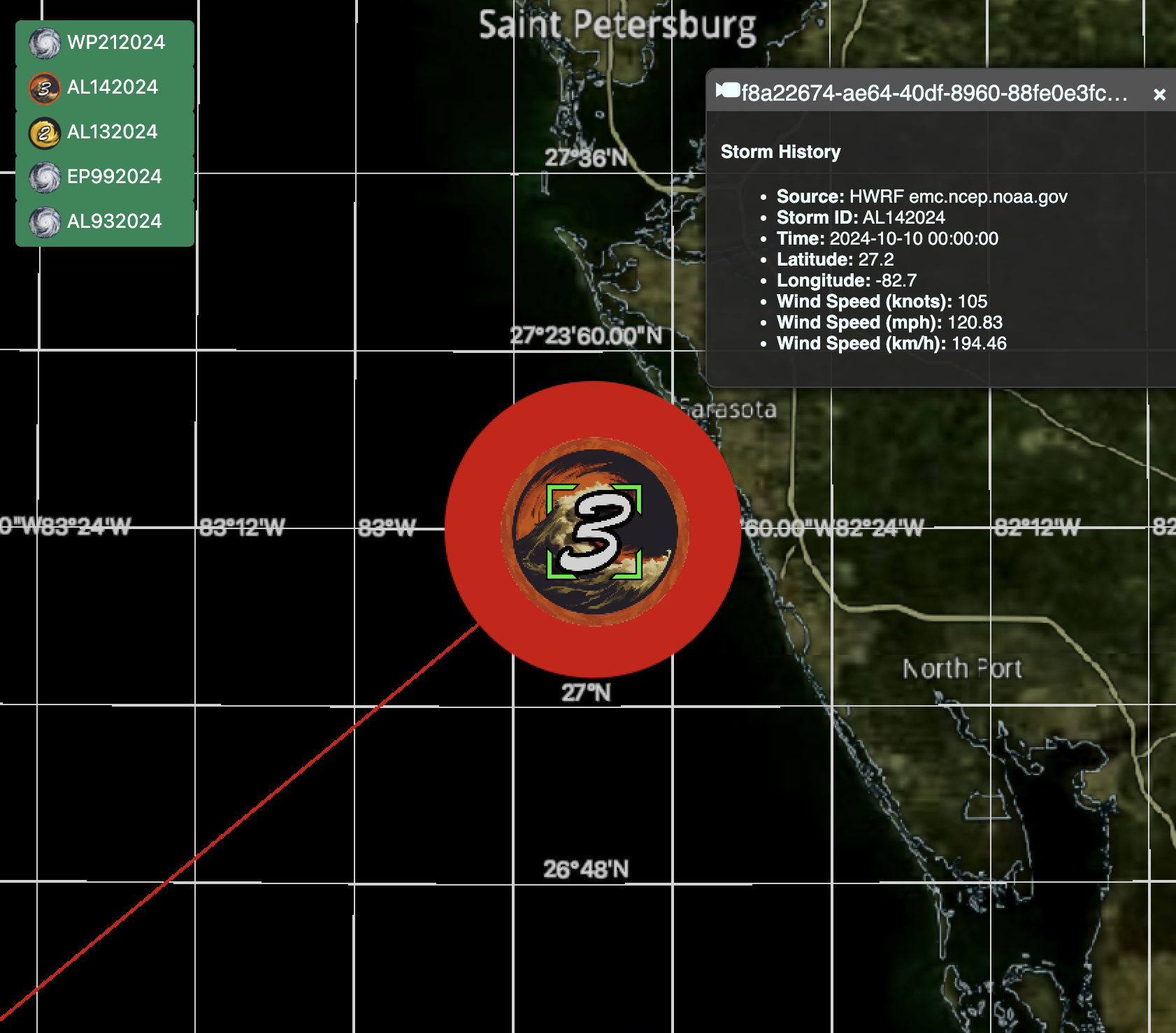The 2022 Atlantic hurricane season started on June 1st and ended November 30th. Fourteen storms were named, out of which 2 were major hurricanes.
The NOAA forecast predicted 14 to 21 names of storms with an average speed of 39 mph or higher. Out of them, 6 to 10 were predicted to be potentially massive hurricanes with a speed of 74mph or higher. 3 to 6 were predicted to be destructive with an average wind speed of 111mph or higher.
The 2022 Hurricane Season
Hurricanes are considered to be one of the most devastating and powerful natural calamities on Earth. Hence scientists at NASA suggest that ordinary people be prepared for such conditions. It is imperative to do everything that is required to ensure safety.
Through our collaborating with Akash Patel during the 2022 Atlantic Hurricane Season, we have successfully deployed live tropical storm reporting across the globe including live reporting of our hurricane artificial intelligence, HURAIM, for emergency responses. Through our efforts, we have identified a key business value that can provide emergency response teams an hourly product or live forecasts. Reporting is currently being offered through emails, please contact husmani@44.195.42.9 .
The Different Types Of Hurricane Category
Hurricanes are graded by the National Hurricane Center on a scale of 1-5. One being least fatal and five being life-threatening.
Although Category 1 and 2 cause less damage still, it is always better to take all safety measures against possible cases of injuries and accidents.
Category 1
Category 1 storms are less dangerous and produce less damage with winds ranging from 74-95mph. Frame homes are susceptible to face damage to the roofs, shingles and siding, and gutters. Shallow-rooted trees might be uprooted and power outages could last a few days.
Category 2
Category 2 storms are likely to cause more damage than Category 1 storms with winds blowing at 96-110 mph speeds. Homes and buildings are prone to major damage to the siding and the roofs. Innumerable trees can be uprooted and cause blockage of roads. Power outages can last for days to weeks.
Category 3
Category 3 storms can cause havoc and severely damage homes and other high-rise buildings. Trees can be snapped from the ground and electricity and water may be unavailable for an extended period of time. Wind speed usually recorded is between 111-129mph
Category 4
Category 4 storms are catastrophic, and roofs and outer walls of buildings can be severely affected. Uprooted trees and power poles can isolate an entirely residential area. Power outages can last for weeks to months. Winds usually blow at a speed of 130 to 156mph.
Category 5
Category 5 storms, in other words are devastating, with a wind speed of 157mph or higher. Snapped trees, collapsed bridges, and buildings can cut all connections in a residential area. Lack of fresh water and food can be witnessed in several places. Power outages can be seen for months, and the entire site becomes inhabitable for long periods.
The 2022 Atlantic Hurricane Season: Complete Forecast
When hurricane season started, NOAA predicted three to six major hurricanes as Category 3 or even higher. The NOAA administrator Dr. Rick Spinrad also stated, “As we reflect on another potentially busy hurricane season, past storms — such as Superstorm Sandy, which devastated the New York metro area ten years ago — remind us of the impact of one storm can be felt for years.”
The Names Of The 2022 Atlantic Tropical Cyclones:
- Fiona
- Danielle
- Julia
- Alex
- Owen
- Walter
- Paula
- Bonnie
- Richard
- Virginie
- Colin
- Earl
- Shary
- Karl
- Gaston
- Nicole
- Richard
- Hermine
- Martin
- Ian
- Lisa
In 2021, the forecasters ran out of storm names and used certain letters from the Greek alphabet to name a few storms. The meteorologists have decided to pick up a supplemental list of names once they run out of storm names.
How Are Hurricanes Formed
There are a lot of factors associated with how severe a hurricane can be, as per NOAA. The warmer temperature and climate change are the ruling factors to increase or decrease the speed of a storm.
The La Nina is a phenomenon that cools the waters of the Pacific and turns the jet stream towards the north. The impacts of hurricanes El Nino and La Nina are more likely to cause turbulence between the Pacific and the Atlantic region – strengthening one part and weakening the other.
Another primary reason to affect this season was the warm sea temperature mixed with the Atlantic trade winds and the West African Monsoon winds.
Several studies conducted proved that weather change plays a massive role in deciding the origin and fate of a hurricane. The warm temperature causes the air to hold more moisture and makes the storms stronger, wetter, and more severe.
The Risks
Hurricanes contribute to landfall along the coastal regions. Anyone who comes across a hurricane’s direct path is in grave danger.
For example, the massive destruction that Hurricane Fiona and Hurricane Ian caused had a significant impact on the lives of the Floridians. Bridges collapsed, communication ceased, destruction of local flora and fauna, collapsed buildings, and uprooted trees caused waterlogging and flooding at various parts. This, in turn, leads to the outbreak of several life-threatening diseases and pathogens.
Hence it is of utmost importance for people to care necessary precautions before the storm lashes out.
Preventive Measures That Are To Be Taken
- Planned Evacuation
Evacuation plans should be fully implemented in a time of distress. Taking shelter in a nearby friend’s home or neighborhood should be accounted for. Bringing pets is also necessary.
- Gather Supplies
Gathering enough food and supplies will help you last for a few days is suggested. When the situation outside is bleak, it is always better to stay indoors and take shelter. Cash, battery-powered radios, electronics, and flashlights are of immense importance in case there is a power outage.
- Insurance Policy
It is always suggested to have a strong insurance coverage policy in case there is a danger. If The flooding is massive, a separate flood insurance policy must be made. Although the exact amount cannot be estimated, certain factors are associated with hurricane damage in Florida.
- Each hurricane policy varies and covers a different amount.
- The prices usually fluctuate from one carrier to the next.
- A few parts of the state are considered to be at higher risk.
- The cost coverage is dependent on the home value.
Whether you are living in your own house or a rented apartment and the value is approximately $250,000, the dwelling cost is the same. Hence if you opt for a 5% hurricane deductible, you would need to pay $12,500, that is $250,000 x 0.05 = $12,500, towards a specific wind-related claim before the insurance company decides to go further with the rest of the hurricane damage cost.
- Repair Your Home
Irrespective of the fact that you are staying elsewhere and not at your home during a hurricane, it is always better to guard your home with aluminum panels, plywood, or steel to make sure your home is ready for the storm.
- Brace Yourself
During a time of crisis, it is suggested that you are mentally prepared for the worst outcomes. Prepare yourself before the storm hits. The odds say that when a hurricane knocks at your door and you are not ready, the results are more likely to turn in favor of the hurricane.
Conclusion
The lashing out of hurricanes causes a threat to human life were extremely high. The downfall in the economy and loss of life is massive. The devastation causes a lack of food and proper shelter, so adequate medical help is not received. Join us in helping out the needy in their time of distress. A little help from your end can create a massive difference in the lives of others.
******
References:
- 2022 Atlantic Hurricane Season. (n.d.). https://www.nhc.noaa.gov/data/tcr/
- US Census Bureau. (2022, May 26). 2022 Atlantic Hurricane Season: June 1-November 30. Census.gov. https://www.census.gov/newsroom/stories/atlantic-hurricane-season.html
- Metz, J. (2022, August 12). Experts Predict “Above Average” 2022 Hurricane Season. Forbes Advisor. https://www.forbes.com/advisor/homeowners-insurance/2022-hurricane-season/
- The 2022 Atlantic Hurricane Season is Here | U.S. Geological Survey. (2022, July 14). https://www.usgs.gov/news/featured-story/2022-atlantic-hurricane-season-here
- Jones, Z. C. (2022, June 4). What to know about the 2022 Atlantic hurricane season. CBS News. https://www.cbsnews.com/news/atlantic-hurricane-season-2022-forecast-noaa/
- 2022 Atlantic hurricane season (eggmin) | Hypothetical Hurricanes. . . (n.d.). Hypothetical Hurricanes Wiki. https://hypotheticalhurricanes.fandom.com/wiki/2022_Atlantic_hurricane_season_(eggmin)

